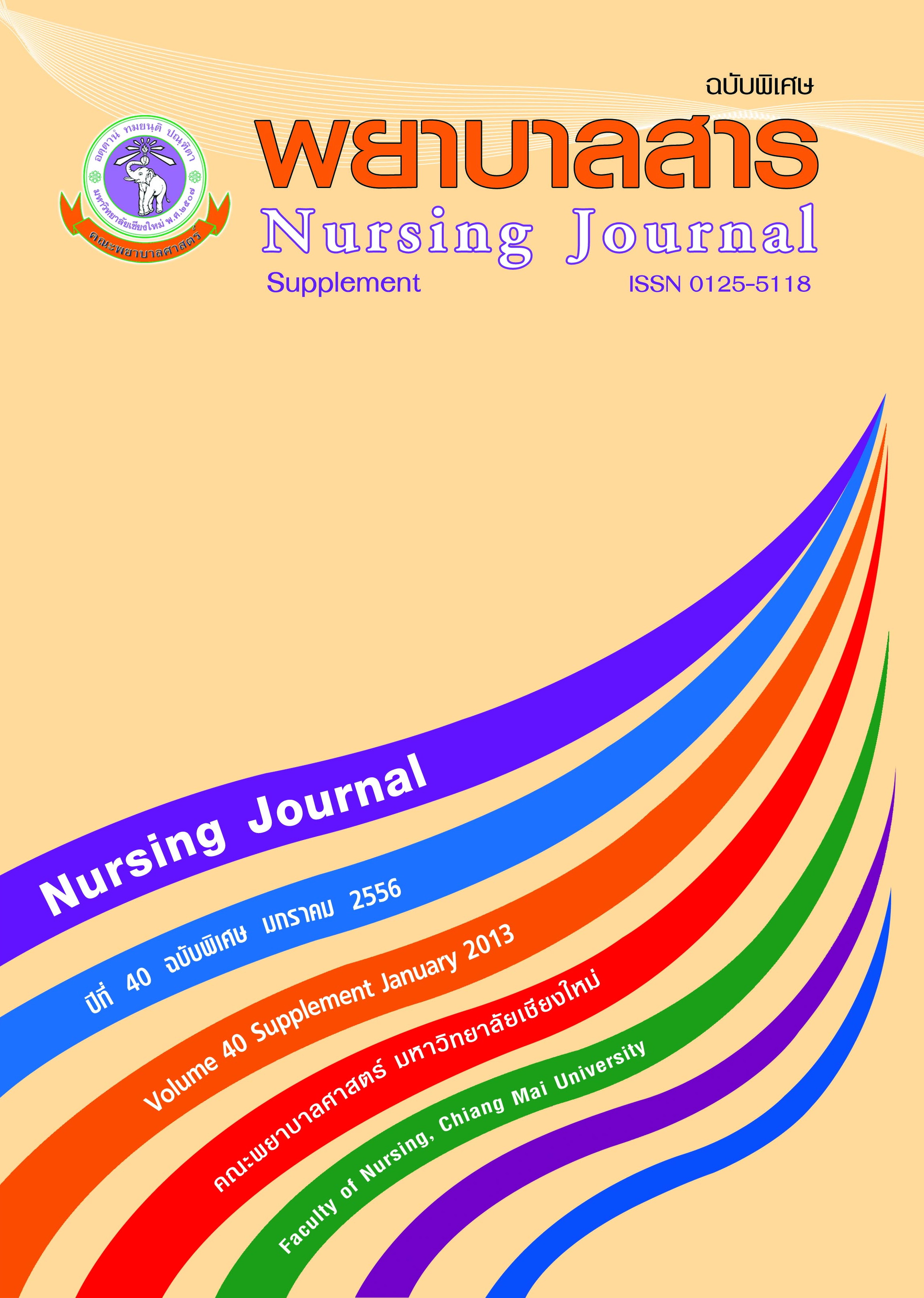การวิเคราะห์มโนทัศน์สภาวะการทำหน้าที่
Keywords:
สภาวะการทำหน้าที่, การวิเคราะห์มโนทัศน์, การทำหน้าที่Abstract
บทคัดย่อ
สภาวะการทำหน้าที่มีความสัมพันธ์กับการดูแลผู้ป่วยและการทำวิจัยในทางการพยาบาลกระดูกและข้อและเป็นมโนทัศน์ที่น่าสนใจ แต่ยังไม่มีความชัดเจน และคลุมเครือในวรรณกรรมโดยเฉพาะที่มีอยู่ในปรากฎการณ์ของทางการพยาบาลศัลยกรรมกระดูกและข้อ วัตถุประสงค์ของบทความฉบับนี้คือเพื่อการวิเคราะห์มโนทัศน์สภาวะการทำหน้าที่และเพื่อให้เกิดความชัดเจนในคำจำกัดความ กำหนดคุณลักษณะอธิบายคำศัพท์และขอบเขตของมโนทัศน์ โดยใช้ขั้นตอนการวิเคราะห์มโนทัศน์ของวอกเกอร์และเอแวนท์(Walker & Avant, 2005) ประกอบด้วย การเลือกมโนทัศน์ การกำหนดวัตถุประสงค์ของการวิเคราะห์ระบุการใช้มโนทัศน์ที่สามารถค้นหาได้ การกำหนดคุณลักษณะของมโนทัศน์ การระบุกรณีตัวอย่าง การระบุกรณีศึกษาประเภทที่มีความกํ้ากึ่งหรือไม่ชัดเจน ที่มีความสัมพันธ์และตรงกันข้าม การระบุสิ่งที่มาก่อนและผลที่เกิดขึ้นและการกำหนดสิ่งที่จะวัด
ผลการวิเคราะห์มโนทัศน์สภาวะการทำหน้าที่ ได้คำจำกัดความของสภาวะการทำหน้าที่ หมายถึงการปฏิบัติกิจกรรมของบุคคลที่เกิดขึ้นเพื่อตอบความจำเป็นขั้นพื้นฐานได้อย่างปกติและมีความผาสุกในชีวิตประจำวันได้ด้วยตนเอง คุณลักษณะที่กำหนด คือ 1) การทำหน้าที่ด้านร่างกาย หมายถึง การทำกิจกรรมต่างๆในชีวิตประจำวันได้ ทั้งการทำกิจวัตรปฏิบัติกิจวัตรประจำวัน และการทำกิจกรรมที่ซับซ้อน 2) การทำหน้าที่ด้านจิตใจ หมายถึง การจัดการดูแลเกี่ยวกับสภาพจิตใจได้ ได้แก่ ความรู้สึกและอารมณ์ 3) การทำหน้าที่ด้านสังคม หมายถึง การมีปฏิสัมพันธ์กับคนในสังคมและการทำงาน และ 4) การทำหน้าที่ด้านความคิด หมายถึง การรู้บุคคล เวลา และสถานที่ การมีสมาธิ การตัดสินใจ การแก้ปัญหา และความจำ
สรุป มโนทัศน์สภาวะการทำหน้าที่เป็นการปฏิบัติกิจกรรมของบุคคลในชีวิตประจำวัน โดยมี4 คุณลักษณะ คือ การทำหน้าที่ด้านร่างกาย จิตใจ สังคมและความคิด ซึ่งเป็นมโนทัศน์ที่เป็นผลลัพธ์ทางบวกของการพยาบาล ควรในการนำไปใช้เป็นแนวทางการประเมินคุณภาพการปฏิบัติการพยาบาลและใช้ในการพัฒนาเครื่องมือเพื่อการวัดผลลัพธ์ของการศึกษาวิจัยหรือพัฒนาทฤษฎีต่อไป
คำสำคัญ: สภาวะการทำหน้าที่ การวิเคราะห์มโนทัศน์ การทำหน้าที่
Abstract
Functional status has been associated with a patients care and research for orthopedicnursing and it is crucial concept, however, it is not clearand ambiguous in the phenomenonof orthopedics nursing.The purpose of this paper is to analyze the concept of a functional statusand to clarify the meaning, define the attributes, explain a term, and the scope of the concept.The method used in the analysis was based on Walker and Avant’s concept analysis (2005)which consisted of 8 important steps including selection of a concept of interest, determine theaims or purposes of analysis, identify all uses of the concept, determine the defining attributes,identify a model case, identify borderline, related, and contrary cases, identify antecedents andconsequences, and define empirical referents.
The results of a concept analysis of functional status, the definition of functional statuswas the actual performance of person’s activity to respond normal basic needs and well-being ina daily living. The defining attributes were 1) physical function which were activities of daily living(ADLs) and instrumental activities of daily living (IADLs), 2) psychological function which was themental management such as affect and mood, 3) social function which were the conversationwith others and work performance, and 4) cognitive function which were cognitive orientation,concentration, decision making, problem solving, and a memory.
In conclusion, the concept of functional status was the activities in daily living of persons. Ithas 4 attributes including physical, psychological, social, and cognitive function.which is a conceptrelated to positive nursing outcomes. Thus, it should be utilized as a guide of assessing qualityof nursing care and to develop tools for the measurement of research and theory in the future.
Key words: Functional Status, Concept Analysis, Function
Downloads
How to Cite
Issue
Section
License
บทความที่ได้รับการตีพิมพ์เป็นลิขสิทธิ์ของวารสารพยาบาลสาร
ข้อความที่ปรากฏในบทความแต่ละเรื่องในวารสารวิชาการเล่มนี้เป็นความคิดเห็นส่วนตัวของผู้เขียนแต่ละท่านไม่เกี่ยวข้องกับมหาวิทยาลัยเชียงใหม่ และคณาจารย์ท่านอื่นๆในมหาวิทยาลัยฯ แต่อย่างใด ความรับผิดชอบองค์ประกอบทั้งหมดของบทความแต่ละเรื่องเป็นของผู้เขียนแต่ละท่าน หากมีความผิดพลาดใด ๆ ผู้เขียนแต่ละท่านจะรับผิดชอบบทความของตนเองแต่ผู้เดียว






